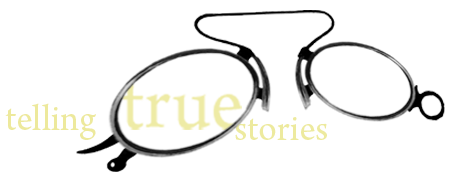Kramer’s books offer eye-level accounts of the social, political, and bureaucratic effects of shifting technologies, ways of business, and cultural and political frameworks on the everyday lives of those involved. They bring the techniques and voice of fiction writing — save for the invention of facts — to carefully researched nonfiction.
The first book, written when he was in his mid-twenties, was MOTHER WALTER AND THE PIG TRAGEDY (Knopf, 1972 & Plume, 1973), a series of personal essays derived from the “Living in the Country” columns he wrote in the Boston Phoenix and the Real Paper. He lived, in those days, far out in the hills of western Massachusetts, and each chapter describes an aspect of life in a slowly modernizing Yankee farm-and-mill town from the perspective of a come-from-away back-to-the-lander.
THREE FARMS: MAKING MILK, MEAT AND MONEY FROM THE AMERICAN SOIL (Atlantic/Little Brown, 1980; revised edition, updated, Harvard University Press, 1987), follows life, work and economics on a brilliantly managed Massachusetts family dairy, a mostly-rented Iowa corn-hog farm, and a huge and awkward California corporate farm that pumped oil as well as crops from the ground. Sections of the book appeared in the Atlantic Monthly.
In INVASIVE PROCEDURES: A YEAR IN THE WORLD OF TWO SURGEONS (Harper & Row, 1983, revised Penguin edition, 1984), he joins the working lives of a general surgeon and a peripheral vascular surgeon, and documents their pride and accomplishment, fearlessness and anxiety, magnificence and humility, strength and frailty, their protective dispassion, billing practices and love of gadgets. The Atlantic Monthly excerpted this book.
TRAVELS WITH A HUNGRY BEAR: A JOURNEY TO THE RUSSIAN HEARTLAND (Houghton Mifflin, 1996), started in ’89, as a New York Times Sunday Magazine article, “Can Gorbachev Feed Russia?” Kramer visited vast and astonishingly clumsy collective farms across 11 time zones of Soviet wheat fields, back when half the grain in every loaf of Moscow bread was imported from the west. Fascinated with the workers’ thwarted initiative, mandated carelessness on the job, and pride in their home gardens, he kept returning. Just as he finished the book, in 1991, the Communist Party fell. It was soon clear that the perestroika enthusiasts he’d naively featured as the hope of the future, needed demoting to last-of-the-faithful. He revisited the same farms through ’94. The old bosses endured, a bit more autonomous, in a quadrant of the Russian economy that still awaits a free market in land and financing. A section of the book was published in Outside Magazine, then in Best American Essays ’94. Another section appeared in Tech Review, the MIT alumni magazine.
Kramer has co-edited two textboook/guides for students and working journalists.
LITERARY JOURNALISM, (Ballantine, 1995) remains a standard text for college writing classes. Its fifteen pieces, by writers from Joseph Mitchell to John McPhee are exemplary. The book begins with Kramer’s essay about the genre, “Breakable Rules for Literary Journalists.”
The book that shares part of its name with this website is TELLING TRUE STORIES: A NONFICTION WRITERS’ GUIDE from the Nieman Foundation at Harvard University (Plume/Penguin, 2006), with editions in Chinese and Korean (2019). It’s a start-to-finish handbook for working writers and advanced students. The co-editor, Wendy Call, and Kramer sorted through the hundreds of talks by fine writers and editors offered over the years at Harvard’s narrative conference, and chose and edited about 90 selections, sorted them into nine sections that carry readers from topic selection through fieldwork, drafting and revising, working with editors, and publication. It’s remains in print and is a popular guide for reporters, editors and writers, and is a widely adopted class text.
There’s also a textbook in Danish, VIRKELIGHEDENS FORTAELLERE: NY AMERIKANSK JOURNALISTIK (Forlaget Ajour 2002), co-edited with Ole Soennichsen. It gathers long-form serials by American narrative reporters including Rick Bragg, Tom French, Tom Hallman, and Anne Hull and includes interviews with each, and Kramer’s initial essay, framing the included work and the newspaper narrative movement.
